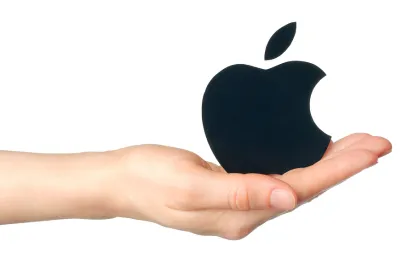How does a patent owner prove it has been irreparably harmed when the protected feature is only a small part of an infringing device? The U.S. Court of Appeals for the Federal Circuit answered that question in the ongoing IP battle between Apple and Samsung, explaining that Apple needed only to show “some connection” between the infringing features and the demand for Samsung’s products, and finding that the district court erred by requiring Apple to show that the infringing features were the “exclusive” or “predominant” drivers of consumer demand. With that clarification of the standard, the Court held that Apple established it met the irreparable harm prong of the eBay factors. Apple Inc. v. Samsung Elecs. Co., Case No. 14-1802 (Fed. Cir., Dec. 16, 2015) (Moore, J.) (Reyna, J., concurring) (Prost, C.J., dissenting).
Apple sought a permanent injunction for several patents covering features of its iPhones and iPads, such as, e.g., swipe-to-unlock. Rather than seeking to enjoin Samsung smartphones and tablets outright, Apple sought to enjoin only the infringing features of Samsung’s products. Despite the relative narrowness of Apple’s proposed injunction, the district court denied Apple’s motion, finding that Apple had not shown that it would suffer irreparable harm. In particular, the district court found that Apple had failed to demonstrate a causal nexus linking Samsung’s infringement to Apples alleged harm—which Apple argued was lost sales and damage to its reputation.
As to the other eBay factors, the district court found the public interest and balance of hardships favored Apple, but that monetary damages were adequate due to the lack of irreparable harm. Consequently, Apple’s request for a permanent injunction was denied. Apple appealed.
Apple argued to the Federal Circuit that its narrowly tailored proposed injunction—which sought to exclude only infringing features and not entire products—eliminated the causal nexus requirement. The Court disagreed, explaining that the purpose of the causal nexus requirement is to establish the link between the act of infringement and the actual harm alleged, thus ensuring that an injunction is not entered for irreparable harm caused by otherwise lawful competition. Therefore, a causal nexus linking the harm and the infringing act must be established regardless whether a feature-based injunction or product-based injunction is sought.
The Court next addressed what Apple was required to demonstrate in order to establish a causal nexus between Samsung’s infringement the alleged harm—Apples lost sales. The Court clarified that although a finding that the competitor’s infringing features drive consumer demand for its products satisfies the causal nexus inquiry, it is not a required element of proof. Recognizing that such a showing may be nearly impossible from an evidentiary standpoint when an accused product has thousands of features, the Court warned that such a requirement would preclude companies like Apple from ever satisfying the eBay test for an injunction against products that compete with its iPad or iPhone and from exercising its right as a patent holder to exclude others. Critically, as pointed out in the Court’s analysis “that the infringing features are not the only cause of the lost sales may well lessen the weight of any alleged irreparable harm, [but] it does not eliminate it entirely.”
The majority found the district court thus erred by requiring Apple to prove that the infringing features were the “exclusive” or “predominant” reason why consumers bought Samsung’s products. Instead the district court should have considered whether there is “some connection” between the infringed features, and the demand for Samsung’s products, i.e., where Apple demonstrated that the patented features “impact consumers’ decisions to purchase the accused devices” and “were important to customers when they were examining their phone choices.” In this way, the causal nexus between infringement and irreparable harm can be shown with evidence that a patented feature is one of several features that cause consumers to make their purchasing decisions.
In the majority’s opinion, evidence of the infringing features impacting consumers’ purchasing decisions include, for example, evidence that the infringer valued the infringing feature, evidence that the infringer’s customers or partners disapproved of the non-infringing alternatives and evidence that the patentee’s customers valued the patented feature. The Court further instructed that although copying, by itself, does not establish causal nexus, it is not wholly irrelevant either and must be considered on a case-by-case basis.
Based on the record, the majority concluded that Apple had sufficiently demonstrated irreparable harm, entitling it to a permanent injunction. In her dissent, Chief Judge Prost strongly disagreed with the majority’s interpretation of the case law, account of the evidentiary record and finding of irreparable harm.
Though Apple also argued that it suffered irreparable harm from injury to its reputation as an innovator, the majority never reaches this issue, stopping at lost sales. In his concurrence however, Judge Reyna explains that he would find that Samsung’s continued infringement would irreparably injure Apple’s reputation as an innovator and that reputational injury, in and of itself, would be a sufficient basis on which to grant an injunction. According to Reyna, when, as here, the disputing parties are “direct competitors,” and when the customers find the patentee’s innovation appearing in a competitor’s products, the patentee’s reputation as an innovator will “certainly” be damaged.



 />i
/>i
